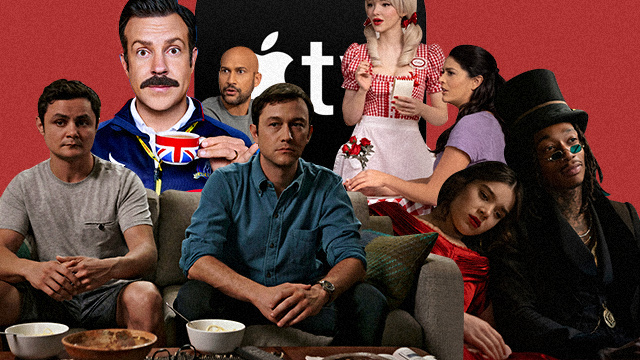
NBC used "Must See TV!" to promote its services in the 1990s. When it first used the phrase, the network already had several popular sitcoms. These shows include Seinfeld, Mad About You. Wings. Frasier. These shows were loved by viewers throughout the decade. They anchored hit programming blocks.
Seinfeld and Friends were not the only sitcoms that aired during the nineties. There were also many other popular sitcoms that aired on Thursday nights. E.R. is an example of a comedy-drama. (from 1994 to 2009) was one of the most watched TV shows in the nation. It remained among the top five shows for many years after its debut.
The 1990s were a turning moment in television history. This was the time when upstart networks joined three of the biggest networks. This gave television viewers more options than ever. However, there were also some sobering events. Watergate, Nixon's scandal, and Bill Clinton's election all had negative effects on television. As a result, cable TV became a dog-eat-dog world. NBC learned the best way attract viewers was to create new sitcoms which could be plugged directly into the Must-See Television slot. There were also shows that failed to make it into the slot.

While there were a lot of great comedies on NBC's Thursday Night lineup, not all programs were able make it into the spotlight. The lead-out slot didn't work out for some of the most iconic shows of the 1990s. Sex in the City: A watered-down version was one example. Another show was the run-off of a one-year wonder that never quite came out of the gate.
A few shows emerged from the ashes of popular sitcoms. Can't Hurry Love, starring Nancy McKeon, was one of the first episodes. It ranked 24th in the 2001 TV show list.
There was one hit comedy that really helped NBC establish itself as a dominant network on Thursday nights. The network was third in its ratings behind Fox and ABC during the 1990s. After it gained traction among the 18-49 audience, it was able outpace its competition and regained the lead.
The network was still the largest network with 18-49 audiences in 2000. It was not the number one cable network in terms total ratings but it was close behind ABC and CBS. This is quite an accomplishment.

It was a combination Seinfeld and Friends, which saved NBC's Thursday night lineup. Although they shared the same universe, they were popular in their own ways. Initially, it was the former show that attracted the most viewers, followed by the latter. The two joined forces for a half-hour segment every week on Must-See TV.
While there weren't many shows that succeeded, there were some notable successes which helped to shape the future of sitcoms. Seinfeld was one of them. Mad About You and Friends were another.
FAQ
Are TV commercials targeted at target audiences?
It is important to understand what people are doing at the moment you're viewing an advertisement.
So if you want someone to watch football on Sunday afternoons, then advertise during the football games. You can reach people who watch movies on Friday night by advertising during movie times.
Advertise during prime-time programs if you want to reach people while they're having dinner.
Knowing what people do to your ads is key. It means being able to see what programs they are watching.
Data is becoming increasingly available thanks to new technologies like DVRs and streaming video.
However, everyone is different and each person has their own preferences. So it's impossible to predict exactly which program someone will watch next.
That's why it's important to test different types of ads. You'll find out what works best based on real-world feedback.
Is tv advertising still relevant today?
The short answer is no, but that does not mean that TV advertising is ineffective. This is because people watch less TV. They are instead using other media.
So TV ads have become an important part of our lives as marketers. They are needed to reach people where they spend the most time online.
It is also important to connect with viewers on a deeper basis through TV ads. This requires us change the way we make TV ads.
No longer can we rely on images or slogans. Instead, we must look at how TV is experienced. How do we connect with people emotionally and make them want to buy our products.
These are all things which require creativity. Digital agencies are the new source of creativity.
Does TV affect sales?
TV has a positive effect on sales as it allows consumers to see which products are available.
Consumers compare prices before buying a product. People often look at product advertisements and think, "I wonder how I can afford that?"
How effective is television advertising?
The most important thing for an advertiser is to have a message that resonates with its target market. Television advertising is cost-effective compared to other media such as radio and print ads. Television advertising is not always effective because too many messages are being sent simultaneously.
One study found that viewers can only remember two commercials from three different spots simultaneously. This proves how difficult it is for a single commercial to have a lasting impact.
Multimedia communication is the best way of getting your message across. You can advertise in magazines and newspapers if your product helps people lose weight.
This will allow for you to reach a larger audience and increase awareness about products.
How does TV Advertising work
Television advertising is an effective method to reach consumers while they are watching television. It's also extremely cost-effective. The most common form of advertising on television is commercial breaks. These commercial breaks last 30 seconds, but they can sometimes be longer if there's a special event like a sporting match or awards ceremony. Commercials are often sponsored by companies who want to promote their products or services. These companies pay for airtime. Some commercials include product information while others only show images or music. A lot of programs offer 'product placement', which allows brands to appear in the program. This might involve the brand being featured in a scene or providing background information on the product.
What does it cost to produce a commercial?
Production costs money for a commercial. The cost depends on the length and number of actors involved as well as the location where it is shot.
A 30-second commercial typically costs between $20,000 and $40,000.
Which industry is most active on television?
The automobile industry.
Their advertising is so prominent because they are constantly looking for ways to improve their cars. They want to make their cars safer, faster and more efficient.
They also need to keep people interested in buying their products as well.
They do what? They have ads all over the place.
On billboards, bus stops, television, radio, magazines, newspapers, you name it.
And they're not just any old ads either.
They're very different from each other. Some are hilarious, others informative, some are fun, some are inspiriting, some are entertaining and some are educational.
No matter what type of advertisement you see, it is likely to be effective.
Statistics
- Radio is extremely accessible – 95 percent of cars have radios, and 99 percent of homes have radios. (marketingevolution.com)
- 93 percent of American adults listen to the radio over the course of the week. (marketingevolution.com)
- Television is a great brand awareness tool - Almost every American has a television, with 83 percent of adults having two or more, and American households keep their televisions on for 8.1 hours each day on average. (marketingevolution.com)
- With OTT ad revenue set to increase from 45% to 60% over the next decade, AdTech pioneers and early adopters of OTT advertising will reap its benefits in the near future. (clearcode.cc)
- This includes 97 percent of Gen X, and 95 percent of Millennials. (marketingevolution.com)
External Links
How To
How do I buy TV time?
You must first have an idea. If you don’t have an idea, you don’t need to spend money buying airtime. Local stations can be reached for ideas. They are often in search of original content.
If you are fortunate enough to find a station offering free airtime, start researching their past work. If you find anything that could be used from those shows, it's worth looking into.
Next, you need to create a script. It should be well-written, and properly structured. It doesn't matter how long it takes to write as long as it's completed within a reasonable amount of time.
Finally, once you're happy with the script, send it to the station. Let them know who and why this show is important to you.
It is likely that you will also be asked for references, such as other shows they have produced, and examples of scripts you have written in the past.
Once you get a response, you'll know if you've got a shot at getting the show aired. The best way to get a response is to contact someone directly involved with the show.